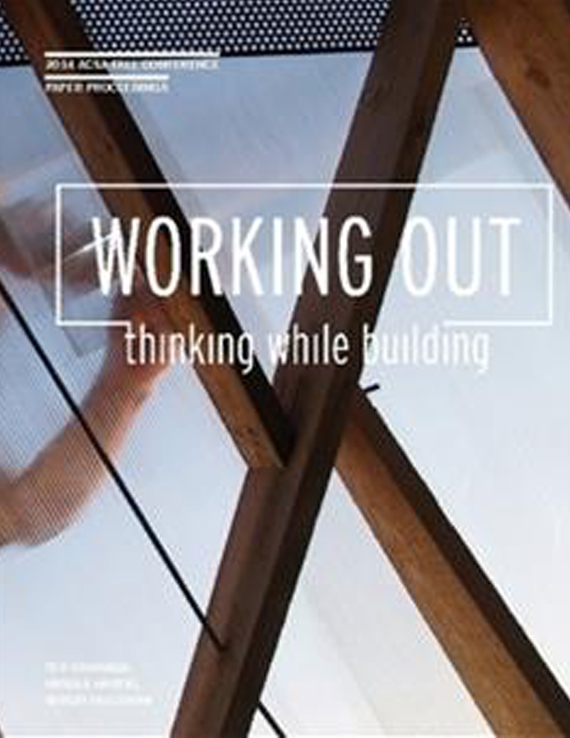Author(s): James Stevens & Ralph Nelson
Prior to the Industrial Age, most architecture was created by the master craftsman or within the vernacular trades where “design” and “making” were aligned. The Industrial Age, and most recently the Information Age, shifted the role of the architect away from that of the “master craftsman” to the professional “knowledge worker.” As a result, a divide between design and making in the practice of architecture occurred. This shift impacted an essential part of the architect’s process by degrading the symbiotic relationship between mind and hand and limiting the immediate design consequences that only making can provide. But recent technological developments have changed the economic model of design and making in architectural practice and re-established this lost connection. Most importantly, it has realigned craft, design, and architectural practice, creating a new relationship between the digital, the vernacular and what this paper will define as the digital vernacular.The purpose of this paper is to examine these new opportunities, define what constitutes the digital vernacular and explore the direct practice and pedagogical impacts making has on architecture. The paper will seek to define the digital vernacular by evaluating digital design-build projects completed in the academy with varying scales, processes and tools. To make evident the virtues of digital vernacular practice, case studies are provided that describe the process of design and fabrication of projects undertaken by [Omitted], an architecture and digital fabrication studio within a college of architecture and design. The selected projects demonstrate the variability digital design-build provides. In addition to emphasizing the future of possible outcomes for design, the studies also highlight the potential for tools to be made and modified according to the needs of the project, ranging from onsite portability to offsite fabrication. These tools provide maker-architects with the ability to create projects of considerable scope, whether they are highly customized masonry units fabricated onsite in India or the offsite fabrication of a full-scale conference room. As evidenced by the case studies, the digital vernacular is an applicable pedagogical approach that provides specific insights to the process of making as well as physical outcomes. The focus of this research is not to build an inventory of equipment, methods and results; rather it is to develop a higher understanding of what constitutes vernacular practice within the digital age. Exploring the digital vernacular is not intended to seek new form-making, but to improve and inform understanding of traditional vernacular methods and to enable a new generation of maker-architects.
Volume Editors
Sergio Palleroni, Ted Cavanagh & Ursula Hartig
ISBN
978-0-935502-94-7

 Study Architecture
Study Architecture  ProPEL
ProPEL 
